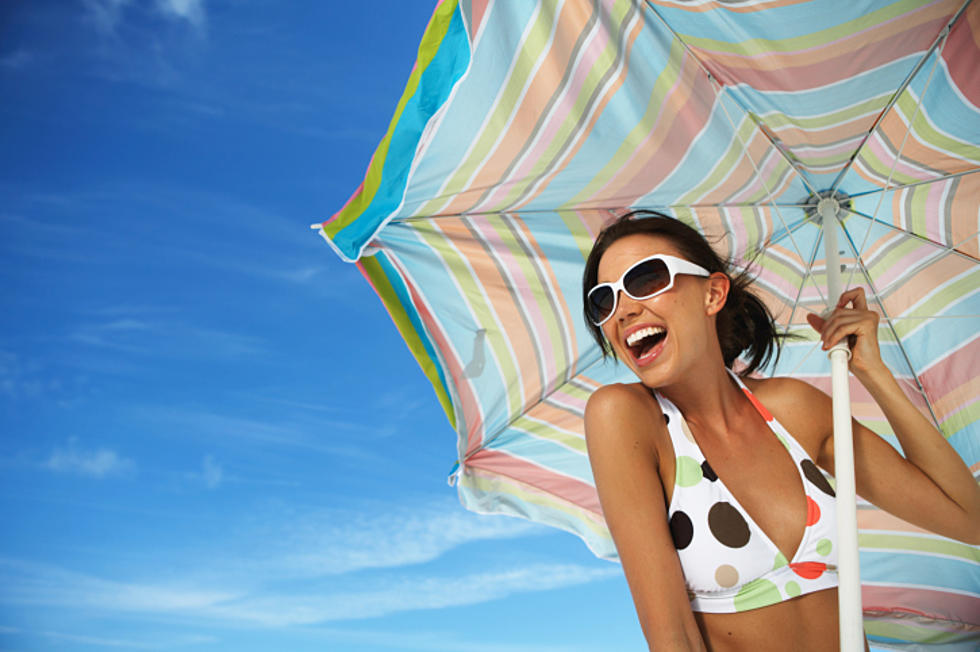
Beach Umbrella Impaled NJ Woman, Menendez Wants That to Stop
Last summer, a woman visiting the Jersey Shore was impaled by a beach umbrella that became airborne when a strong gust of wind blew the base of the umbrella out of the sand and turned it into a flying spear.
67-year-old Margaret Reynolds from London had been enjoying herself on the beach in Seaside Heights when the tip of the beach umbrella pierced her right ankle.
She was rushed to the hospital and was able to recover without any permanent injuries. But U.S. Sen. Bob Menendez says many beach-goers are not as fortunate.
“Between 2010 and 2018 an estimated 2,800 people were rushed to emergency rooms with injuries sustained from beach umbrellas,” Menendez said.
During a stop on the beach in Manasquan on Monday, he said lifeguards keep swimmers safe, police patrol the beaches for any dangers on the sand and water quality monitoring is done to keep ocean water healthy — “but there’s something that we do not have, and that’s guidance about the dangers posed by unsecured beach umbrellas turned spears, flying in the wind.”
Menendez is calling on the Consumer Product Safety Commission to study the issue of beach umbrella danger, and make recommendations about how to make them safer.
"It’s a real public health hazard every time a powerful gust of wind tears a beach umbrella right out of the sand, and turns it into a projectile spear," he said.
He noted a woman in Virginia Beach was killed by a flying beach umbrella in 2016 when the umbrella impaled her through her torso. A man lost his sense of taste and smell when the tip of a beach umbrella was blown into his eye.
Menendez stressed he is not calling for a ban on beach umbrellas — “but something is wrong when any consumer product can so easily take off and kill someone.”
Earlier this year, Menendez sent the CPSC a letter asking whether specific types of beach umbrellas are more hazardous than others, and what can be done to help beach-goers protect themselves and the people around them. But, he said, he did not get a clear response.
Menendez said the commission posted an Instagram message about unsecured beach umbrellas, “but we need much more than that,” so he has sent the commission's acting chairwoman, Ann Marie Buerkle, a letter urging it to consider the efficacy of weighted or other alternative systems that could improve umbrella safety and mitigate serious injury.
“This agency can help educate consumers about how to protect themselves from projectile beach umbrellas that injure hundreds each year,” he said. “If the Consumer Product Safety Commission can provide guidance on how to property secure furniture, surely they can determine what makes for a better, safer beach umbrella.”
Menendez said we pay researchers at the commission to “study these things and develop solutions that work.”
Doug Anderson, the chief of lifeguards in Manasquan, said when the wind typically kicks up around 1 or 2 in the afternoon during the summer, the risk of beach umbrellas becoming dangerous projectiles increases.
He said to improve safety, when you first arrive at the beach “instead of just stabbing the umbrella down, you need to work it back and forth, and that will help sink the umbrella down.”
“If you have one of the cork=screw umbrellas, that motion is going to push the corkscrews down until the two little flaps go under — once that happens you’re pretty secure," he said.
Menendez said if the commission does not develop guidance about how to make beach umbrellas safer, legislation could be introduced to it them to do so, however he’s hoping “common sense prevails.”
He added “the only things that should be flying around in the air on a sunny day at the shore should be seagulls and Frisbees, not spear-tipped beach umbrellas that have the potential to claim lives.”
More From WPG Talk Radio 95.5 FM










